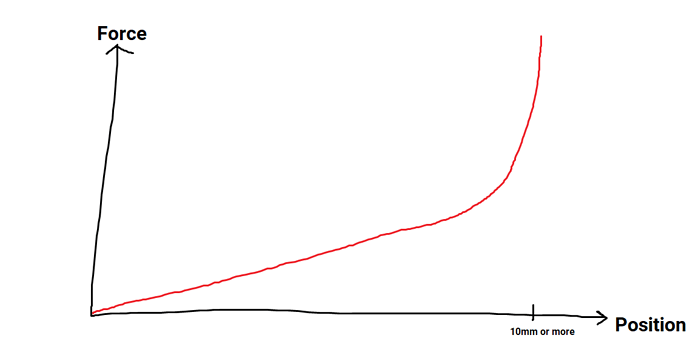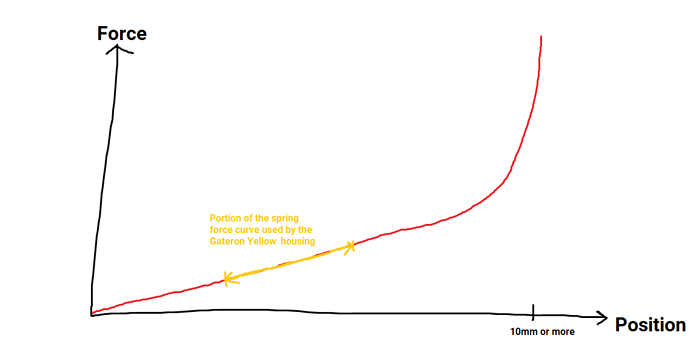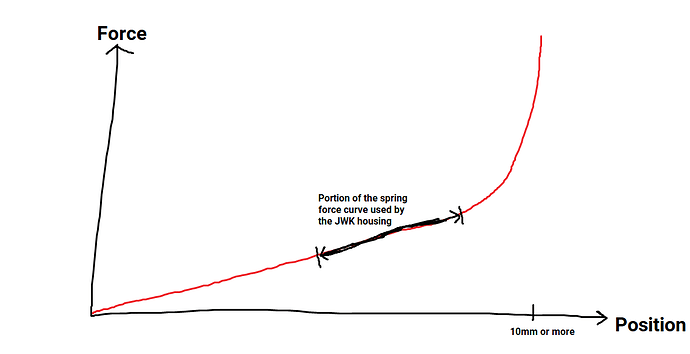I’m not sure if this is going to make any sense, but after talking with HaaTa - the underlying reason is likely because the Gateron and JWK housings compress (preload) the spring to different lengths. The JWK housing likely compresses the spring a bit more than the Gateron housing, which results in a higher force and therefore a heavier switch even if using the same spring.
A typical spring has something like over 10mm of travel if it’s not mounted inside of a switch.
A spring’s full natural force curve (sitting outside of a switch housing) would look something like this:
When you install the spring into a switch, however, it will only use around 4mm of that 10mm+ of natural travel. However, which 4mm of travel out of the 10+mm of travel available the switch uses may vary from housing to housing, depending on how much the spring is compressed when it sits inside the switch (in fancier engineering terms: how much the spring is preloaded by). Some housings compress the spring more, and some housings compress the spring less (e.g. one housing may let the spring sit at 11mm long when installed inside it, while another housing may compress the spring to 9mm when it rests inside that housing). The housing that lets the spring sit longer at its resting state would feel lighter than a housing that compresses the spring more.
Visually - the Gateron Yellow housing perhaps uses this portion of the spring’s full natural force curve:
While the JWK housing, which compresses the spring more, may use a heavier part of the spring’s full natural force curve:
If this is true - the implication is that the same spring would feel lighter or heavier in different housings. Which throws a wrench into spring force ratings.


